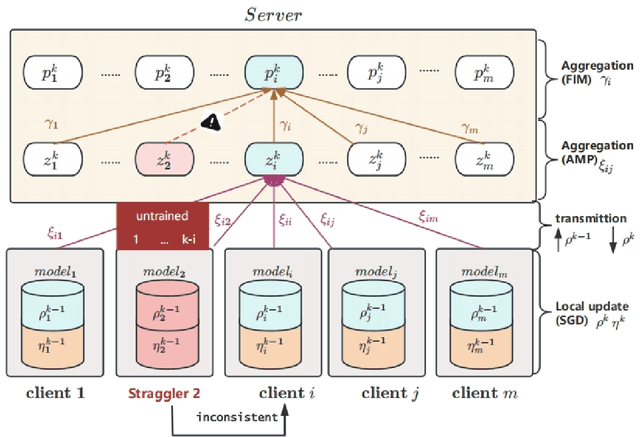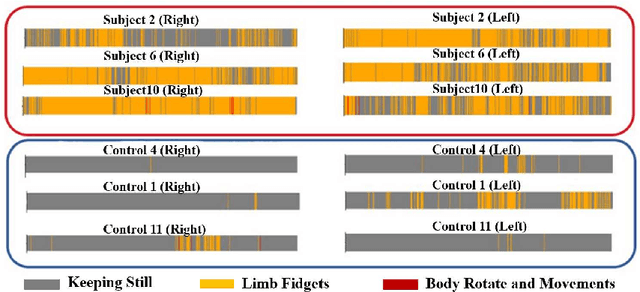Yichun Li
Relative Contrastive Learning for Sequential Recommendation with Similarity-based Positive Pair Selection
Apr 27, 2025Abstract:Contrastive Learning (CL) enhances the training of sequential recommendation (SR) models through informative self-supervision signals. Existing methods often rely on data augmentation strategies to create positive samples and promote representation invariance. Some strategies such as item reordering and item substitution may inadvertently alter user intent. Supervised Contrastive Learning (SCL) based methods find an alternative to augmentation-based CL methods by selecting same-target sequences (interaction sequences with the same target item) to form positive samples. However, SCL-based methods suffer from the scarcity of same-target sequences and consequently lack enough signals for contrastive learning. In this work, we propose to use similar sequences (with different target items) as additional positive samples and introduce a Relative Contrastive Learning (RCL) framework for sequential recommendation. RCL comprises a dual-tiered positive sample selection module and a relative contrastive learning module. The former module selects same-target sequences as strong positive samples and selects similar sequences as weak positive samples. The latter module employs a weighted relative contrastive loss, ensuring that each sequence is represented closer to its strong positive samples than its weak positive samples. We apply RCL on two mainstream deep learning-based SR models, and our empirical results reveal that RCL can achieve 4.88% improvement averagely than the state-of-the-art SR methods on five public datasets and one private dataset.
FedSAF: A Federated Learning Framework for Enhanced Gastric Cancer Detection and Privacy Preservation
Mar 20, 2025



Abstract:Gastric cancer is one of the most commonly diagnosed cancers and has a high mortality rate. Due to limited medical resources, developing machine learning models for gastric cancer recognition provides an efficient solution for medical institutions. However, such models typically require large sample sizes for training and testing, which can challenge patient privacy. Federated learning offers an effective alternative by enabling model training across multiple institutions without sharing sensitive patient data. This paper addresses the limited sample size of publicly available gastric cancer data with a modified data processing method. This paper introduces FedSAF, a novel federated learning algorithm designed to improve the performance of existing methods, particularly in non-independent and identically distributed (non-IID) data scenarios. FedSAF incorporates attention-based message passing and the Fisher Information Matrix to enhance model accuracy, while a model splitting function reduces computation and transmission costs. Hyperparameter tuning and ablation studies demonstrate the effectiveness of this new algorithm, showing improvements in test accuracy on gastric cancer datasets, with FedSAF outperforming existing federated learning methods like FedAMP, FedAvg, and FedProx. The framework's robustness and generalization ability were further validated across additional datasets (SEED, BOT, FashionMNIST, and CIFAR-10), achieving high performance in diverse environments.
A Novel Audio-Visual Information Fusion System for Mental Disorders Detection
Sep 03, 2024



Abstract:Mental disorders are among the foremost contributors to the global healthcare challenge. Research indicates that timely diagnosis and intervention are vital in treating various mental disorders. However, the early somatization symptoms of certain mental disorders may not be immediately evident, often resulting in their oversight and misdiagnosis. Additionally, the traditional diagnosis methods incur high time and cost. Deep learning methods based on fMRI and EEG have improved the efficiency of the mental disorder detection process. However, the cost of the equipment and trained staff are generally huge. Moreover, most systems are only trained for a specific mental disorder and are not general-purpose. Recently, physiological studies have shown that there are some speech and facial-related symptoms in a few mental disorders (e.g., depression and ADHD). In this paper, we focus on the emotional expression features of mental disorders and introduce a multimodal mental disorder diagnosis system based on audio-visual information input. Our proposed system is based on spatial-temporal attention networks and innovative uses a less computationally intensive pre-train audio recognition network to fine-tune the video recognition module for better results. We also apply the unified system for multiple mental disorders (ADHD and depression) for the first time. The proposed system achieves over 80\% accuracy on the real multimodal ADHD dataset and achieves state-of-the-art results on the depression dataset AVEC 2014.
Action-Based ADHD Diagnosis in Video
Sep 03, 2024



Abstract:Attention Deficit Hyperactivity Disorder (ADHD) causes significant impairment in various domains. Early diagnosis of ADHD and treatment could significantly improve the quality of life and functioning. Recently, machine learning methods have improved the accuracy and efficiency of the ADHD diagnosis process. However, the cost of the equipment and trained staff required by the existing methods are generally huge. Therefore, we introduce the video-based frame-level action recognition network to ADHD diagnosis for the first time. We also record a real multi-modal ADHD dataset and extract three action classes from the video modality for ADHD diagnosis. The whole process data have been reported to CNTW-NHS Foundation Trust, which would be reviewed by medical consultants/professionals and will be made public in due course.
ADHD diagnosis based on action characteristics recorded in videos using machine learning
Sep 03, 2024Abstract:Demand for ADHD diagnosis and treatment is increasing significantly and the existing services are unable to meet the demand in a timely manner. In this work, we introduce a novel action recognition method for ADHD diagnosis by identifying and analysing raw video recordings. Our main contributions include 1) designing and implementing a test focusing on the attention and hyperactivity/impulsivity of participants, recorded through three cameras; 2) implementing a novel machine learning ADHD diagnosis system based on action recognition neural networks for the first time; 3) proposing classification criteria to provide diagnosis results and analysis of ADHD action characteristics.
M2GNN: Metapath and Multi-interest Aggregated Graph Neural Network for Tag-based Cross-domain Recommendation
Apr 16, 2023Abstract:Cross-domain recommendation (CDR) is an effective way to alleviate the data sparsity problem. Content-based CDR is one of the most promising branches since most kinds of products can be described by a piece of text, especially when cold-start users or items have few interactions. However, two vital issues are still under-explored: (1) From the content modeling perspective, sufficient long-text descriptions are usually scarce in a real recommender system, more often the light-weight textual features, such as a few keywords or tags, are more accessible, which is improperly modeled by existing methods. (2) From the CDR perspective, not all inter-domain interests are helpful to infer intra-domain interests. Caused by domain-specific features, there are part of signals benefiting for recommendation in the source domain but harmful for that in the target domain. Therefore, how to distill useful interests is crucial. To tackle the above two problems, we propose a metapath and multi-interest aggregated graph neural network (M2GNN). Specifically, to model the tag-based contents, we construct a heterogeneous information network to hold the semantic relatedness between users, items, and tags in all domains. The metapath schema is predefined according to domain-specific knowledge, with one metapath for one domain. User representations are learned by GNN with a hierarchical aggregation framework, where the intra-metapath aggregation firstly filters out trivial tags and the inter-metapath aggregation further filters out useless interests. Offline experiments and online A/B tests demonstrate that M2GNN achieves significant improvements over the state-of-the-art methods and current industrial recommender system in Dianping, respectively. Further analysis shows that M2GNN offers an interpretable recommendation.
Skeleton-based action analysis for ADHD diagnosis
Apr 14, 2023Abstract:Attention Deficit Hyperactivity Disorder (ADHD) is a common neurobehavioral disorder worldwide. While extensive research has focused on machine learning methods for ADHD diagnosis, most research relies on high-cost equipment, e.g., MRI machine and EEG patch. Therefore, low-cost diagnostic methods based on the action characteristics of ADHD are desired. Skeleton-based action recognition has gained attention due to the action-focused nature and robustness. In this work, we propose a novel ADHD diagnosis system with a skeleton-based action recognition framework, utilizing a real multi-modal ADHD dataset and state-of-the-art detection algorithms. Compared to conventional methods, the proposed method shows cost-efficiency and significant performance improvement, making it more accessible for a broad range of initial ADHD diagnoses. Through the experiment results, the proposed method outperforms the conventional methods in accuracy and AUC. Meanwhile, our method is widely applicable for mass screening.
 Add to Chrome
Add to Chrome Add to Firefox
Add to Firefox Add to Edge
Add to Edge